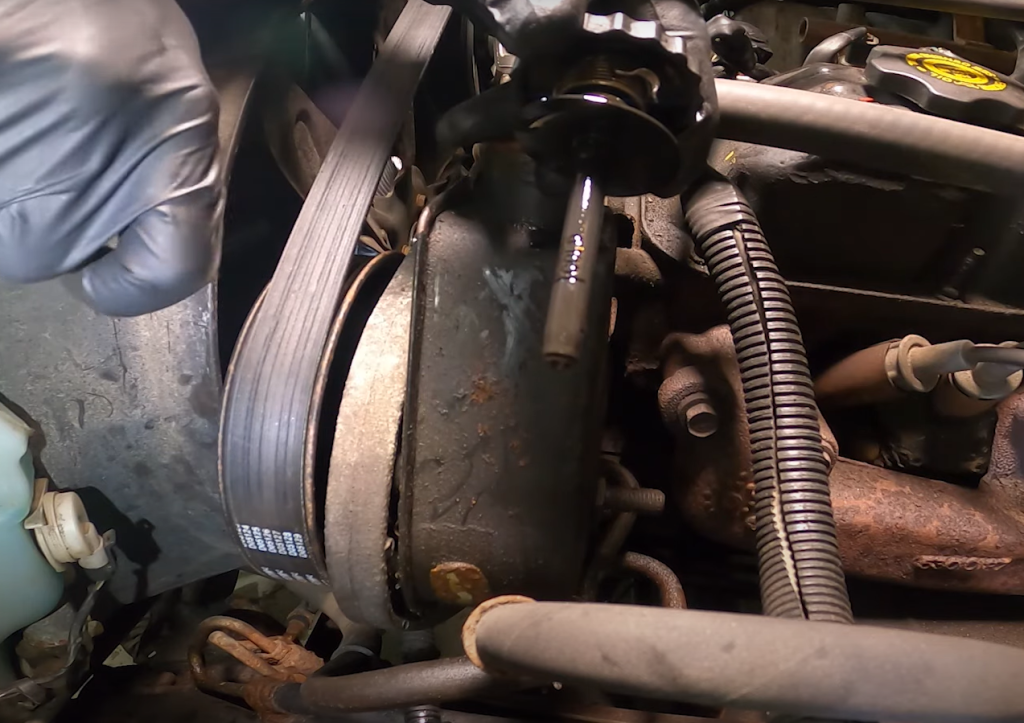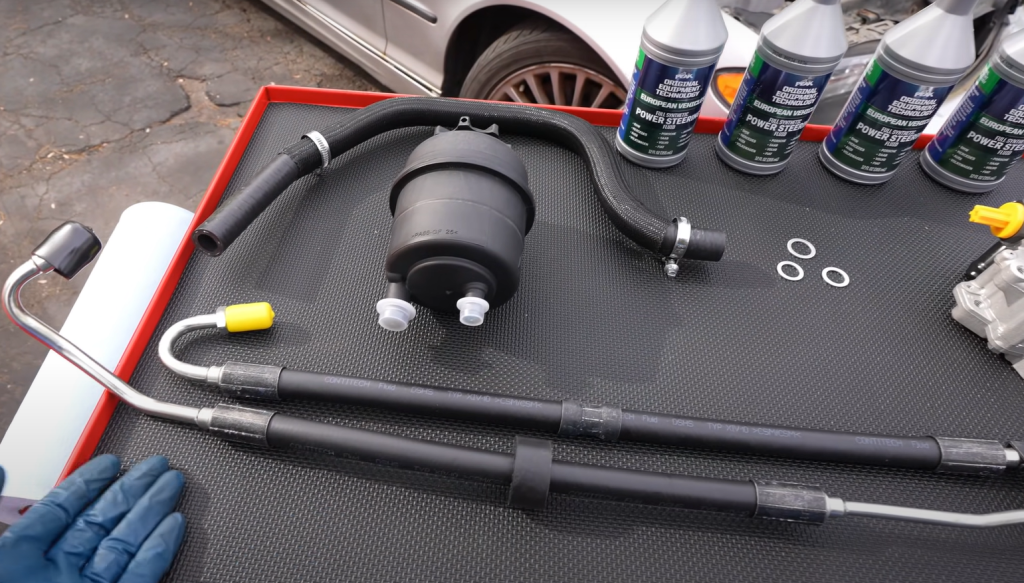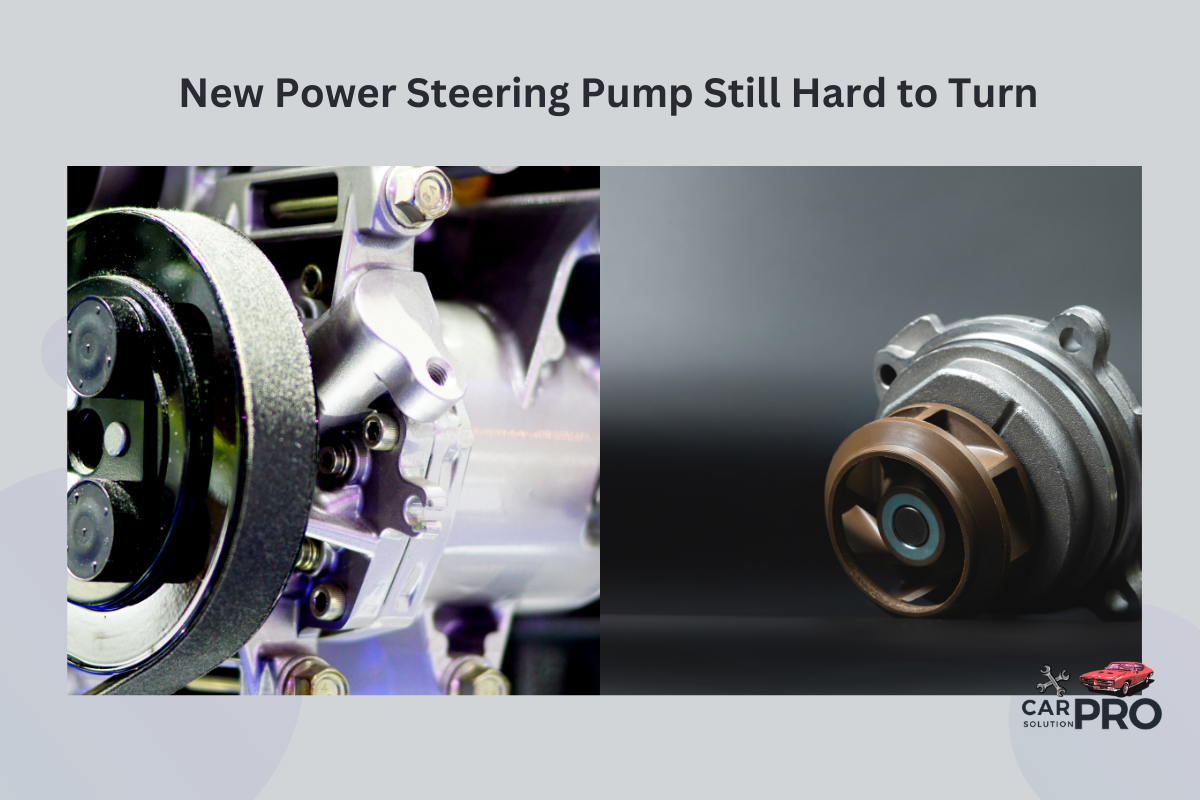Getting a new power steering pump installed can be exciting, but it’s frustrating when the steering wheel remains hard to turn. This issue is more common than you might think. Several factors can cause a new power steering pump to still be hard to turn, including air in the system, damaged steering components, or incorrect fluid levels.
Fixing this problem often involves more than just replacing the pump. It may require checking the entire power steering system. Things like damaged power steering lines or a faulty steering rack can also cause stiff steering.
Proper diagnosis is key to solving this issue. Sometimes, simple fixes like bleeding the system or topping up fluid can help. Other times, more complex repairs may be needed. Understanding the possible causes can help car owners work with mechanics to find the right solution.
Key Takeaways
- New power steering pumps can still be hard to turn due to various system issues.
- Proper diagnosis is crucial for identifying the root cause of stiff steering.
- Regular maintenance and checks can prevent many power steering problems.
Understanding Power Steering Systems
Power steering systems help drivers turn their vehicles with less effort. They use hydraulic or electric power to assist in steering. These systems have multiple parts that work together to make steering smoother and easier.
Components of a Power Steering System

A typical power steering system has several key parts. The pump is the heart of the system. It pushes fluid through the lines. The steering rack converts this fluid pressure into motion.
The reservoir holds extra fluid. Power steering fluid is crucial for the system to work properly. Hoses carry the fluid between parts.
The steering wheel connects to the steering column. This links to the rack, which turns the wheels. Some systems use sensors to adjust steering assist based on speed and other factors.
Hydraulic vs. Electric Power Steering
Hydraulic power steering uses fluid pressure to assist steering. A pump driven by the engine creates this pressure. It’s been used for many years and is reliable.
Electric power steering uses an electric motor instead of hydraulic fluid. This motor helps turn the steering rack. It’s more efficient as it only uses power when needed.
Electric systems are lighter and take up less space. They don’t need fluid, so there’s no risk of leaks. Many newer cars use electric power steering for better fuel efficiency.
Both systems make steering easier, but they work in different ways. Hydraulic systems offer consistent feel, while electric ones can be programmed for different driving modes.
Common Causes of Stiff Power Steering
A stiff steering wheel can make driving difficult and unsafe. Several issues can lead to hard-to-turn steering, even with a new power steering pump.
Low Fluid Level
Low power steering fluid is a common cause of stiff steering. When the fluid level drops, the pump can’t create enough pressure to assist with steering.
This can happen due to leaks in the system. Hoses may crack or connections may loosen over time, allowing fluid to escape.
Regular checks of the power steering fluid level are important. If it’s low, topping it off may solve the problem. But it’s crucial to find and fix any leaks.
Contaminated fluid can also cause issues. Dirt or debris in the fluid can clog the system. In this case, flushing and replacing the fluid is necessary.
Faulty Steering Rack
A bad steering rack can make turning the wheel difficult. The steering rack is a key part of the power steering system.
Signs of a faulty rack include grinding noises when turning and fluid leaks under the car. The steering wheel may also feel loose or wobbly.
Wear and tear over time can damage the rack. Impacts from potholes or accidents can also cause problems.
Fixing a faulty steering rack often requires replacement. This is a complex job best done by a professional mechanic.
Pump Failure
Even a new power steering pump can fail. Pump problems can lead to stiff steering.
A faulty pump may not create enough pressure. This makes the steering feel heavy, especially at low speeds.
Air in the system can cause pump issues. Proper bleeding of the system after pump replacement is crucial.
A loose or worn belt can also affect pump performance. The belt should be checked for proper tension and condition.
In some cases, the new pump may be defective. If other causes are ruled out, the pump itself may need to be replaced again.
Diagnosing the Issue
When a new power steering pump is still hard to turn, it’s crucial to identify the root cause. A systematic approach to diagnosis can help pinpoint the problem and guide the solution.
Visual Inspection
Start by checking the power steering fluid level and condition. Low or dirty fluid can cause steering difficulties. Look for leaks in the system, especially around hoses and connections.
Examine the power steering belt for proper tension and wear. A loose or damaged belt can affect the pump’s performance.
Inspect the steering components for signs of damage or excessive wear. This includes tie rods, ball joints, and the steering rack.
Check tire pressure and alignment. Uneven or low tire pressure can make steering harder.
Pressure Tests
Perform a pressure test on the power steering system. This measures the pump’s output pressure and helps determine if it’s functioning correctly.
Use a pressure gauge to check the system pressure at idle and while turning the wheel. Compare the readings to the manufacturer’s specifications.
If pressure is low, it could indicate a faulty pump, restricted flow, or a problem in the steering gear.
High pressure might suggest a blockage in the system or a malfunctioning pressure relief valve.
Steering Pump Analysis
Listen for unusual noises coming from the pump. Whining or grinding sounds can indicate internal damage or air in the system.
Check if the pump is getting proper power and ground. Electrical issues can affect pump performance.
Bleed the power steering system to remove any air bubbles. Air in the lines can cause steering difficulty.
If all else fails, consider bench testing the pump to verify its output and functionality. This can help determine if the pump itself is faulty or if the issue lies elsewhere in the system.
Replacing a Power Steering Pump

Replacing a power steering pump requires careful preparation and a systematic approach. The process involves safety precautions and specific steps to ensure proper installation.
Preparation and Safety
Before starting, gather the necessary tools and parts. You’ll need a socket set, wrenches, pliers, and a new power steering pump. Park the car on a level surface and engage the parking brake. Wear safety glasses and gloves to protect yourself.
Locate the power steering pump under the hood. It’s usually on the front of the engine, driven by a belt. Check your car’s manual for the exact location.
Disconnect the negative battery cable to prevent electrical issues. Place a drain pan under the car to catch any fluid that might spill during the replacement.
Step-by-Step Replacement Process
Start by removing the power steering belt. Loosen the tensioner pulley and slide the belt off the pump pulley.
Disconnect the power steering lines from the pump. Have rags ready to catch any fluid that leaks out. Remove the mounting bolts holding the pump in place and take out the old pump.
Install the new pump in the reverse order. Make sure all bolts are tightened properly. Reconnect the power steering lines and refill the system with the correct type of power steering fluid.
Reattach the belt and adjust its tension. Start the engine and turn the steering wheel from lock to lock a few times to bleed the system. Check for leaks and proper steering function.
Post-Replacement Checks
After installing a new power steering pump, it’s crucial to perform some important checks. These steps help ensure the system works properly and prevent future issues.
System Bleeding
Bleeding the power steering system removes air bubbles that can cause hard steering. Start by filling the reservoir with the correct fluid. Turn the steering wheel fully left and right several times with the engine off.
Next, start the engine and repeat the process. Listen for unusual noises and check for leaks. Top up fluid as needed.
Raise the front wheels off the ground. Turn the steering wheel lock-to-lock 15-20 times. This helps push out remaining air.
Lower the car and recheck the fluid level. Top up if necessary. Repeat the bleeding process if steering remains stiff.
Test Drive
A test drive reveals any lingering steering issues. Begin in an empty parking lot. Turn the wheel fully in both directions at a stop.
Drive slowly, making gradual turns. Listen for unusual noises like whining or grinding. Feel for smooth, consistent steering resistance.
Increase speed gradually. Make sharper turns when safe. The steering should remain easy and responsive.
Park and recheck the fluid level and color. Look for leaks under the vehicle. If problems persist, further diagnosis may be needed.
Frequently Asked Questions
Power steering issues can persist even after replacing components. Common problems include stiff steering, bleeding the system, and sudden failures. Proper diagnosis and maintenance are key to resolving these issues.
Why is my steering still stiff after installing a new power steering pump?
Stiff steering after a pump replacement can have several causes. Low fluid levels or contaminated fluid can impact steering performance. Air in the system or a loose power steering belt can also lead to stiffness.
A faulty steering box or damaged steering rack may be the culprit if the pump is working correctly. Uneven tire pressure can also make steering feel harder than normal.
What steps should be taken after replacing a power steering pump?
After installing a new pump, it’s crucial to fill the system with the correct fluid. The mechanic should then bleed the system to remove air bubbles.
Checking belt tension and condition is important. A loose or worn belt can affect the pump’s performance. The mechanic should also inspect for leaks and ensure all connections are tight.
How can you differentiate between a failing power steering pump and a failing rack and pinion?
A failing pump often produces a whining noise, especially when turning. Steering may become harder at low speeds or when the engine is idling.
Rack and pinion issues typically cause clunking noises or vibrations in the steering wheel. Steering might feel loose or wandering on straight roads.
What are common symptoms of power steering pump failure?
Power steering pump problems can manifest in several ways. Noisy steering, especially when turning, is a common sign.
Difficulty turning the wheel, particularly at low speeds, may indicate pump issues. Fluid leaks under the vehicle or low fluid levels can also point to pump failure.
How do you properly bleed a power steering system?
To bleed the system, start with the car off and wheels straight. Fill the reservoir with fluid. Turn the steering wheel lock-to-lock several times without starting the engine.
Start the engine and repeat the process. Top off the fluid as needed. Continue until there are no more air bubbles and the fluid level remains stable.
What could cause a power steering system to stop working suddenly?
A sudden loss of power steering can be alarming. A broken serpentine belt is a common cause, as it drives the power steering pump.
A failed pump or severe fluid leak can also lead to sudden steering loss. In rare cases, electrical issues affecting power steering components may be responsible.



